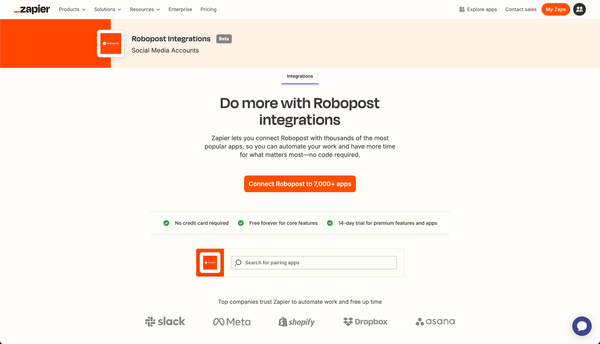How Social Media Tools Facilitate A/B Testing and Experimentation
Explore how social media tools enhance A/B testing for digital marketing, optimizing strategies and user experience effectively.

A/B testing is essential in digital marketing for improving user experiences and making campaigns more effective. Using social media tools for A/B testing allows marketers to run experiments accurately and get useful insights that guide their strategies.
Key Takeaways
- A/B testing is crucial for making ongoing improvements in digital marketing, allowing decisions based on data.
- Social media platforms use A/B testing a lot to make user experiences better and boost engagement.
- Successful A/B testing requires choosing the right metrics, focusing on specific user groups, and studying past examples.
- Future A/B testing will likely include AI and machine learning to improve predictions.
Understanding the Basics of A/B Testing
What is A/B Testing?
A/B testing, or split testing, is a way to compare two versions of a webpage or app to see which one works better. You show both versions to similar groups of people at the same time to find out which one gets better results.
Why It Matters in Digital Marketing
A/B testing is important because it helps you understand what your customers like and want. It gives you detailed data on how different users interact with your site or app. You can use it to test different designs and features to see which ones work best.
Main Steps in A/B Testing
- Set Goals: Decide what you want to improve (like click rates or sales).
- Create Versions: Make different versions of the content or feature you’re testing.
- Run the Test: Show each version to different groups of people and collect data.
- Check Results: Analyze the data to see which version did better.
- Make Changes: Use the winning version's elements to improve your overall performance.
Implementing A/B Testing on Social Media
Choosing the Right Metrics
It's important to pick the right metrics to measure how well your A/B tests on social media are doing. Metrics could be things like how many people are engaging with your posts, how many are clicking through, or how many are making purchases. Make sure the metrics you choose match your business goals.
Segmentation and Targeting
To make your A/B tests on social media effective, you need to target the right audience. This means looking at things like age, interests, and behaviors to create specific groups. This helps you deliver content that’s more relevant and get more accurate results from your tests.
Case Studies of Successful Tests
Looking at case studies of A/B tests that worked well can give you useful ideas. For example, a company might find that a certain color scheme increased sales for a particular group of people. These examples can help you plan your own tests and understand how A/B testing can be useful on social media.
The Role of Data in A/B Testing
Data Collection and Analysis
Collecting and analyzing data is crucial for A/B testing. By gathering data on each version, you can see which one works better and why. This involves tracking things like click rates, conversion rates, and how users engage with the content.
Making Data-Driven Decisions
A/B testing lets you make decisions based on real data, not just guesses. The insights from your data help you improve your marketing strategies and user experiences, making sure your choices are backed by evidence.
Long-term Benefits of A/B Testing
A/B testing isn’t just for quick wins; it also provides lasting benefits. Regular testing improves user experiences, boosts conversion rates, and enhances overall business performance. Using data effectively in your planning helps achieve these long-term results.
Challenges and Solutions in A/B Testing
Common Pitfalls
A/B testing can be challenging due to its technical complexity and the need for resources. It’s important to avoid wasting time on ineffective elements. Thanks to various tools, A/B testing is now accessible to businesses of all sizes without needing specialized skills.
Overcoming Obstacles
Teams new to A/B testing might find it difficult at first, but with careful planning, you can turn this challenge into an opportunity. By creating a clear plan and using resources wisely, you can make A/B testing cost-effective and beneficial for business growth.
Best Practices for Effective Testing
To make A/B testing work well, follow these key steps: set clear success metrics, conduct the tests properly, and analyze the results carefully. This structured approach helps improve product performance and user experience through systematic experimentation and data-driven decisions.
Future Trends in A/B Testing
Technological Advancements
A/B testing is getting better thanks to new technology. Improved analytics and real-time data are making experiments more accurate and faster. This progress helps make testing results more precise and speeds up decision-making.
Integration with AI and Machine Learning
AI and machine learning are becoming important in A/B testing. These technologies are expected to handle many parts of the testing process automatically, which reduces mistakes and makes things more efficient.
Predictions for the Next Decade
In the next ten years, A/B testing will likely become even more important in digital marketing. The focus will probably be on using AI to predict test results before running them, which will help in planning and carrying out tests more strategically.
Conclusion
Social media tools are crucial for running successful A/B tests and experiments. These platforms not only help with complex testing but also give access to a large audience for immediate feedback and results. Using these tools allows marketers to fine-tune their strategies accurately, improving user engagement and conversion rates. As digital marketing evolves, integrating social media into A/B testing is essential for staying competitive and addressing users' changing needs.
